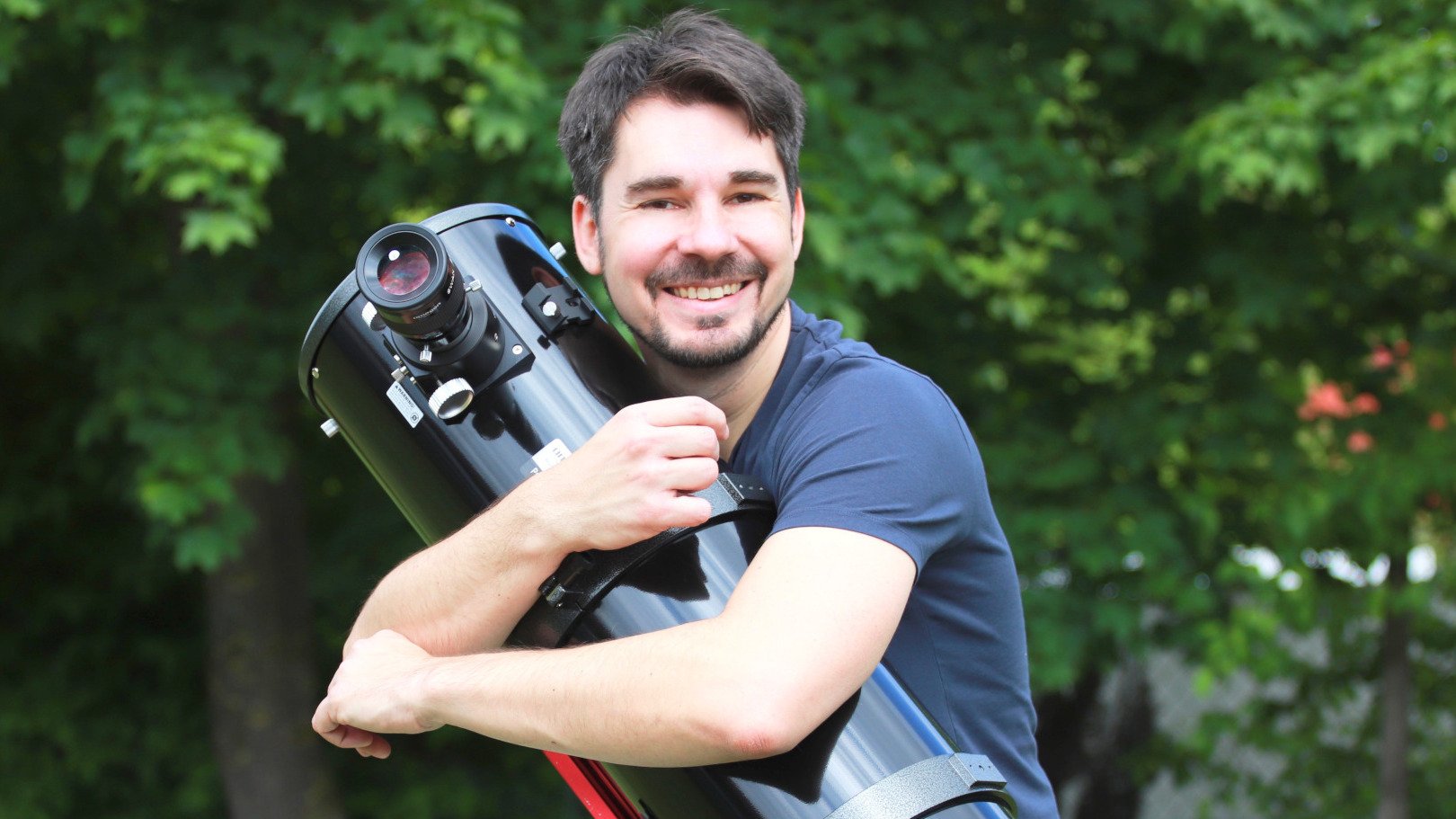Camera tripods
Are you looking for the perfect tripod to take your photography or nature watching hobby to the next level? Here you will find answers to some of the the most important questions!
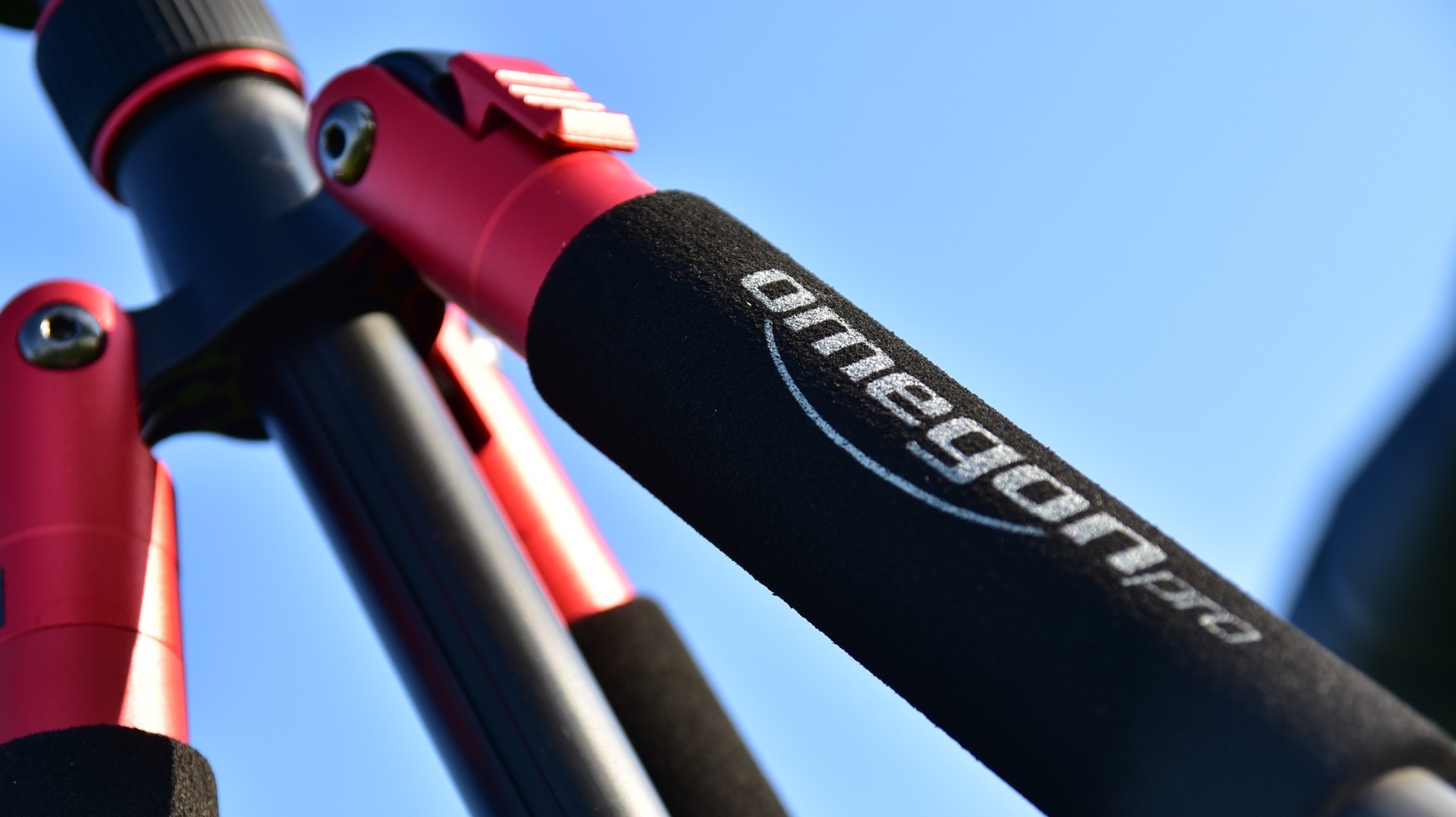
Do I actually need a tripod? What would I use it for?
A tripod is often a useful tool for photography, astronomy, animal and landscape observation, and hunting. Here are four good reasons why a tripod can be helpful:
- Stability: a tripod can help reduce shaking and provide a stable base for your camera or telescope. This is especially useful for photography with long exposure times or telescopes with high magnification.
- Flexibility: a tripod allows you to put the camera or telescope in positions that would otherwise be difficult or impossible to reach.
- Precision: a tripod allows you to precisely align your camera or telescope to capture the desired subject.
- Comfort: a tripod can help you work for extended periods of time in a more comfortable and relaxed way.
For photography, a tripod is particularly useful for long exposures, night shooting, landscapes, macro photography, and self-timed group photos.
For astronomy, a tripod is essential for telescopes, as they need a stable base in order to capture images of stars and planets.
For animal watching and hunting, a tripod can help to create a steady base to keep your binoculars or riflescope still and to better observe and capture the desired subject.
How much do I need to spend on a good tripod?
The right tripod will depend on what equipment you have, and what you are planning to use it for. The more expensive tripods costing €300 or more are better in terms of finish, as well as in their functionality, durability, and load-bearing capacity.
As a rough guide, we would recommend that the tripod should cost around 30 percent of the value of your equipment. So if your camera/spotting scope/telescope cost €2,000, we would recommend a high-quality tripod for around €600.
However, you will also find good carbon tripods for as little as €100 for everyday use.
What is the hook on the tripod for?
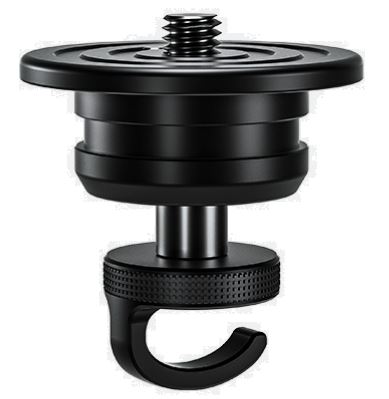
Some tripods have a hook on the centre column. You can use this to attach a weight such as a backpack if required, guaranteeing additional safety and stability if your equipment is lightweight or the conditions are windy.
Warning! Do not exceed the maximum load!
Threads
What is a camera thread?
Camera threads are also referred to as tripod threads. They are used to fix cameras, binoculars, and spotting scopes to the tripod. The camera thread is standardised and independent of any individual manufacturer. It is an old American standard thread size measured in inches such as 1/4 inch.
What thread does a commonly available tripod have?
Tripods generally have two relevant thread sizes:
1) 1/4 inch 20 threads per inch UNC (1/4"20 UNC)
Tripods with a head will have a 1/4" thread on the head to attach cameras, binoculars, and spotting scopes.
2) 3/8 inch 16 threads per inch UNC (3/8"16 UNC)
Tripods without a head have a 3/8" thread used to attach a head.
What tripod heads are available?
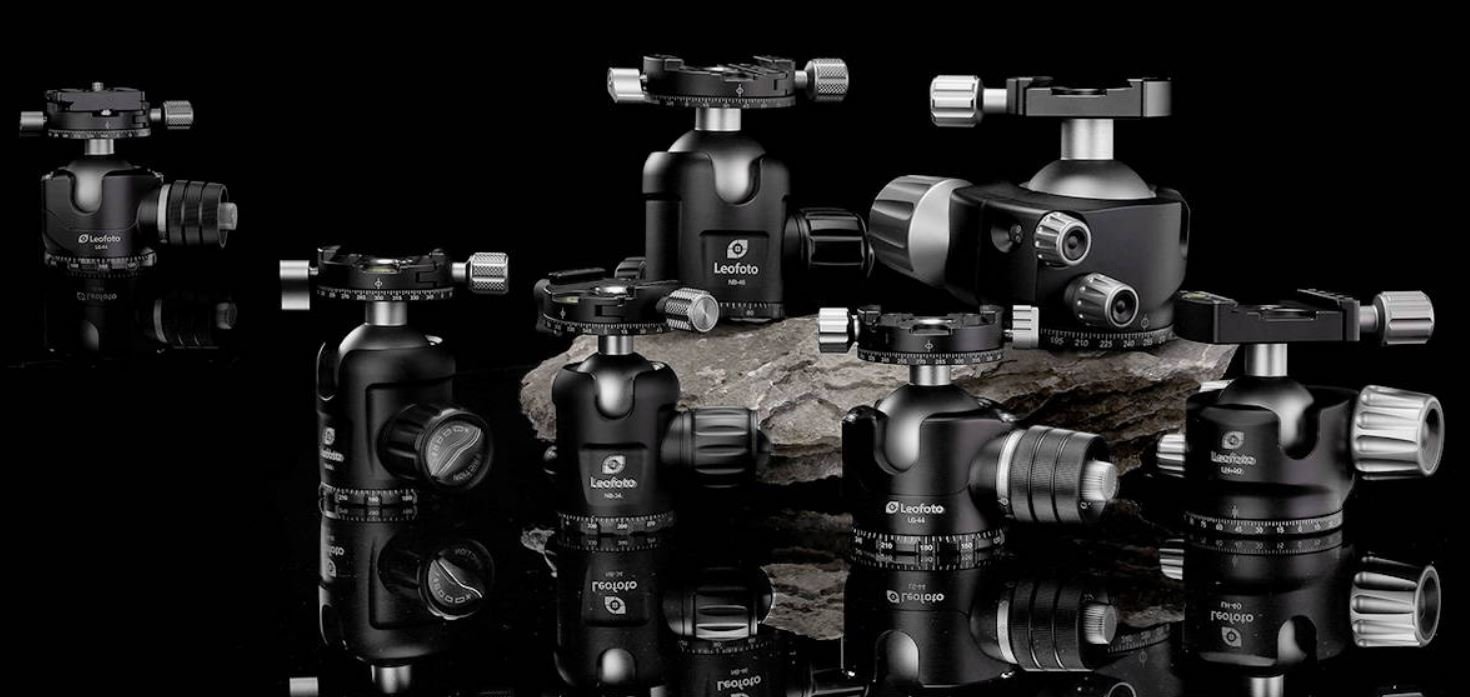
A tripod head allows you to pan, tilt, and rotate the equipment attached to it. There are numerous construction types and designs of tripod heads that allow movement from left to right, up and down, and 360 degrees around their own axis.
An overview of the most important tripod heads:
The fluid-damped video or 2-way pan
The fluid-damped video or 2-way pan head ensures smooth movements with no juddering. This head is popular with videographers and birdwatchers.
2-way pan head
Also known as a 2D head, this allows movement in two directions. It can tilt up or down and swivel left to right. Their relatively simple construction makes them quite outdated these days, but they are still very useful for landscape photography. The disadvantage of these tripod heads is that they cannot be rotated into portrait format, so their usefulness for photography cameras is limited.
3-way pan head
Also known as a 3D head, it can be operated in three directions - independently of each other. This head aids exact alignment, allowing you to work with the precision required for both panorama and architectural photography. The 3-way pan head is extremely versatile and is one of the most popular tripod heads.
Geared head
The geared head is the perfectionist big brother of the 3D head and, at a higher price, offers more comfort for observers and photographers. The rough orientation of your camera can often be set manually, while the precise three-dimensional alignment is then carried out using the adjustment modes.
Video tilt head
Video tilt heads are very useful for video cameras or for shooting film, as this is only done in landscape format. The vertical tilt and horizontal panning are usually sufficient, and a 3D head is not necessary. The focus here is much more on the damping property of a video head for perfectly smooth and gentle camera movement. The long handle makes this even easier. Video heads are usually also fluid-damped.
Ball head
Considered THE most commonly used tripod head, thanks to its convenient and easy-to-use operation. The ball head is popular due to its compact size and light weight, which is perfect for fast and flexible camera movements. This is exactly what you need for action, sports, portrait, and travel photography. The more expensive ball heads include a braking function to prevent your camera from inadvertently tipping in any direction.
Pistol grip head
Also known as an action grip or joystick, this head belongs to the group of ball head tripods. The grip looks similar to that of a pistol. It allows free movement as long as it is pressed, and fixes the head in the desired position as soon as you release your grip. This makes your action and sports shots even better than with a normal ball head.
Panoramic head
This head allows you to take the perfect panoramic shot. The tripod head rotates along a horizontal plane. You can set the angle on the degree scale, and then rotate the head only at this set angle. On some models, the angle adjustment is set using a ratchet mechanism. The longer the focal length of your camera, the more shots are needed and the closer the required ratchet setting. Afterwards, you can use editing software to combine the individual images into a classic wide format panorama picture. High-quality panoramic head tripods include a function to precisely align the optical centre point (the nodal point) of your camera to the tripod’s centre of rotation, allowing you to photograph the foreground free of parallax (i.e. without double contours).
Gimbal head
A gimbal tripod head is particularly suitable for use with long telephoto lenses, since the combination of camera and heavy lens is automatically balanced around the camera's centre of gravity and held in a horizontal position, even when the tripod headlock is released. The gimbal offers your valuable equipment excellent protection as it cannot tip forward unchecked. These heads are particularly suitable for nature and sports photography.
Motorised tripod head
These heads are driven by a motor and are useful if your equipment is inaccessible and so is being operated remotely or automatically. They are usually controlled using radio, cable or infrared. Motorised tripod head models are very application-specific (e.g. wildlife photography, weather observation, multi-row panoramic shots), so you need to clearly define your intended use before buying.
Tripod height
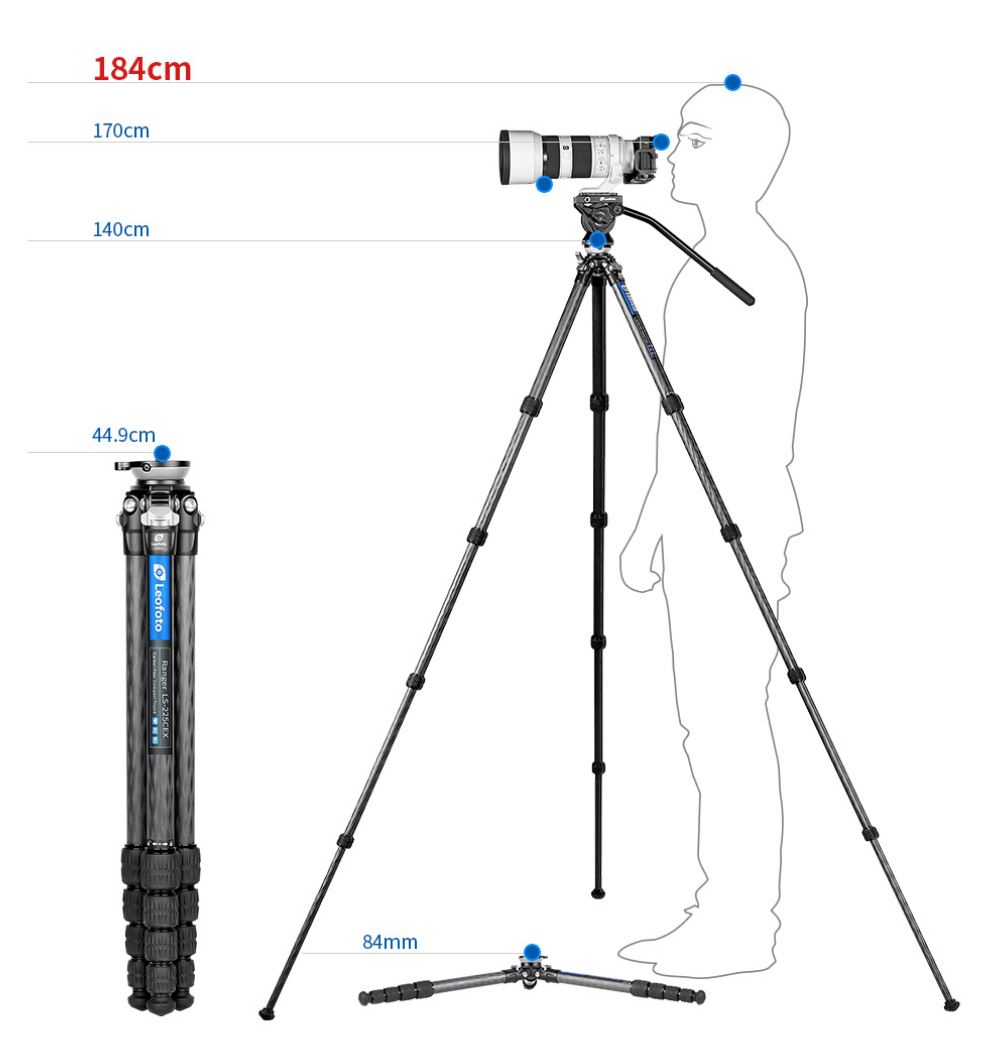
How tall should a tripod be?
The optimal height for your tripod depends on your height. You should deduct around 10-15 cm to start with, plus the height of your camera/spotting scope together with the tripod head which you plan to use, which will come to another 10 cm or so. So, if you are 180 cm tall, you need a tripod that can reach a shoulder height of 155 to 160 cm.
This ensures that you can look straight through your viewfinder without needing to add a centre column.
How tall should a smartphone tripod be, and what are the features of a good one?
The height of the mobile phone tripod depends on whether you want to shoot from a bird's eye view with a selfie stick, or are filming home workouts or tutorials from your exercise mat or kitchen worktop. A normal smartphone tripod can generally be extended up to a height of 150 cm, and the legs can be spread wide enough to provide stability. This is adequate for most purposes.
We recommend a sturdy, but light and small aluminium or carbon tripod that you can carry without effort.
The tripod head should twist and pan effortlessly and smoothly to avoid any shaking caused by fast movement.
Which tripod do I need for which location?
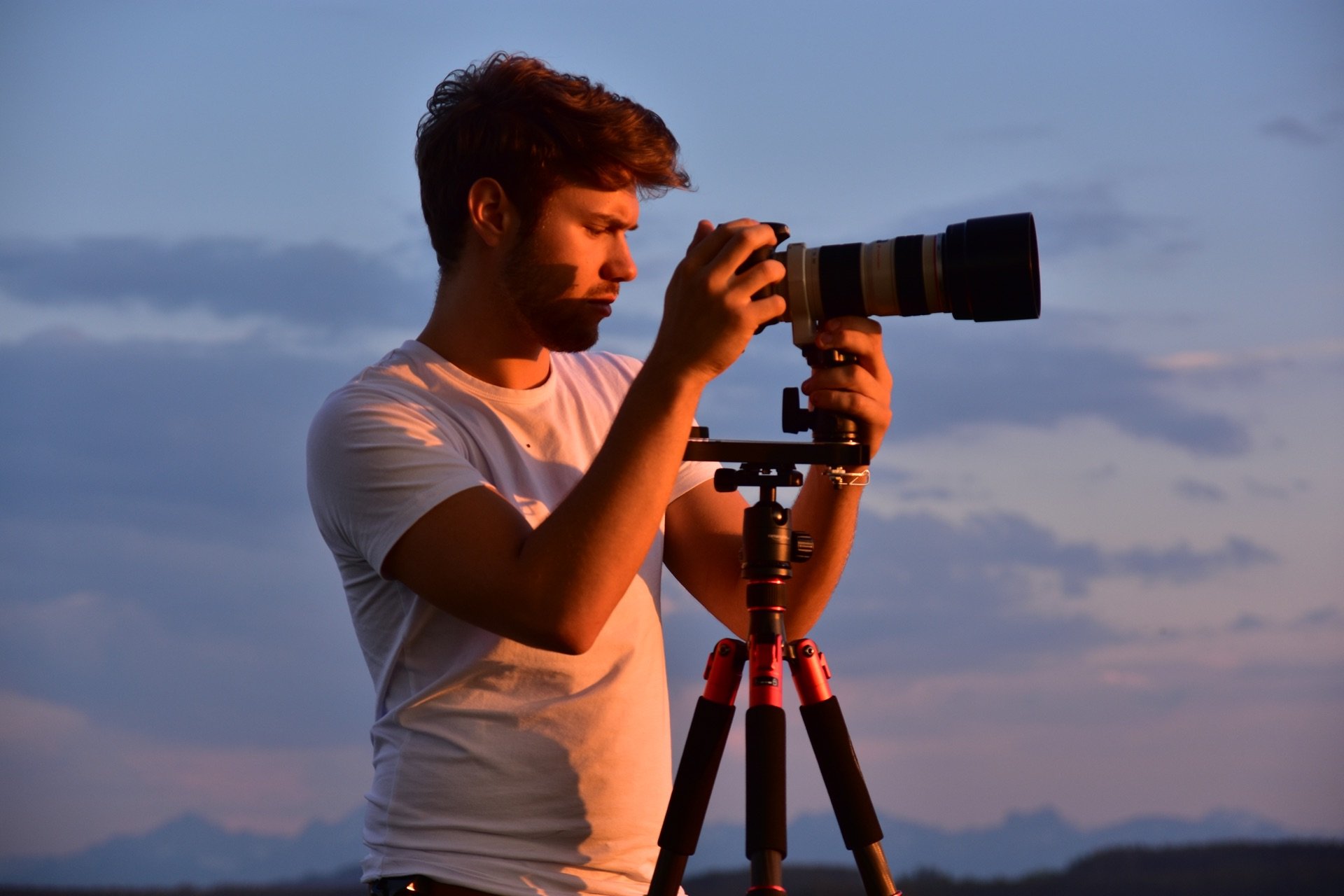
Mountain
A light but stable tripod is recommended for use in the mountains, as you will often have to carry it over long distances. Carbon or aluminium tripods are a good choice because they are lightweight but also provide good stability. A tripod with spiked feet or rubber pads is ideal for rough terrain.
Snow
A tripod for use in snow should be stable and steady. Ideally, it should offer the possibility of loading the tripod legs with additional weights to keep it stable in wind and weather. A tripod with rubber feet is a good choice, as it provides a secure footing even on slippery surfaces.
Heat
Carbon tripod legs are a good choice for use at high temperatures, as they do not heat up as quickly as metal legs.
Wind
A tripod with a low centre of gravity for greater stability is recommended in windy conditions. Spiked feet or hooks to attach additional weights can also help.
Water (lake, riverbed, coast, marsh)
In a wet environment, tripods that protect against corrosion and are as waterproof as possible are recommended. Titanium tripod legs are salt water-resistant. A low-maintenance twist-lock locking system is also recommended. Due to its technical design, this reduces the amount of water, sand and grit which could otherwise get into the legs. This will give you more service life from your tripod.
There are various other tripod functions that may be useful, depending on your requirements. For example, if you are planning long exposure times, a tripod with a stable centre column and good adjustability would be useful. For travel photography, it is worth looking for a tripod that packs small and is light-weight.
How do I attach my camera, binoculars, or spotting scope to the tripod?
The exact method depends on the tripod and the equipment you are using.
Typically, your device will be attached to the tripod using a camera plate or adapter bracket. Make sure the equipment is secure and sitting correctly.
First screw your camera to the camera plate and then attach both to the tripod head.
What should I look for when choosing a stable tripod?
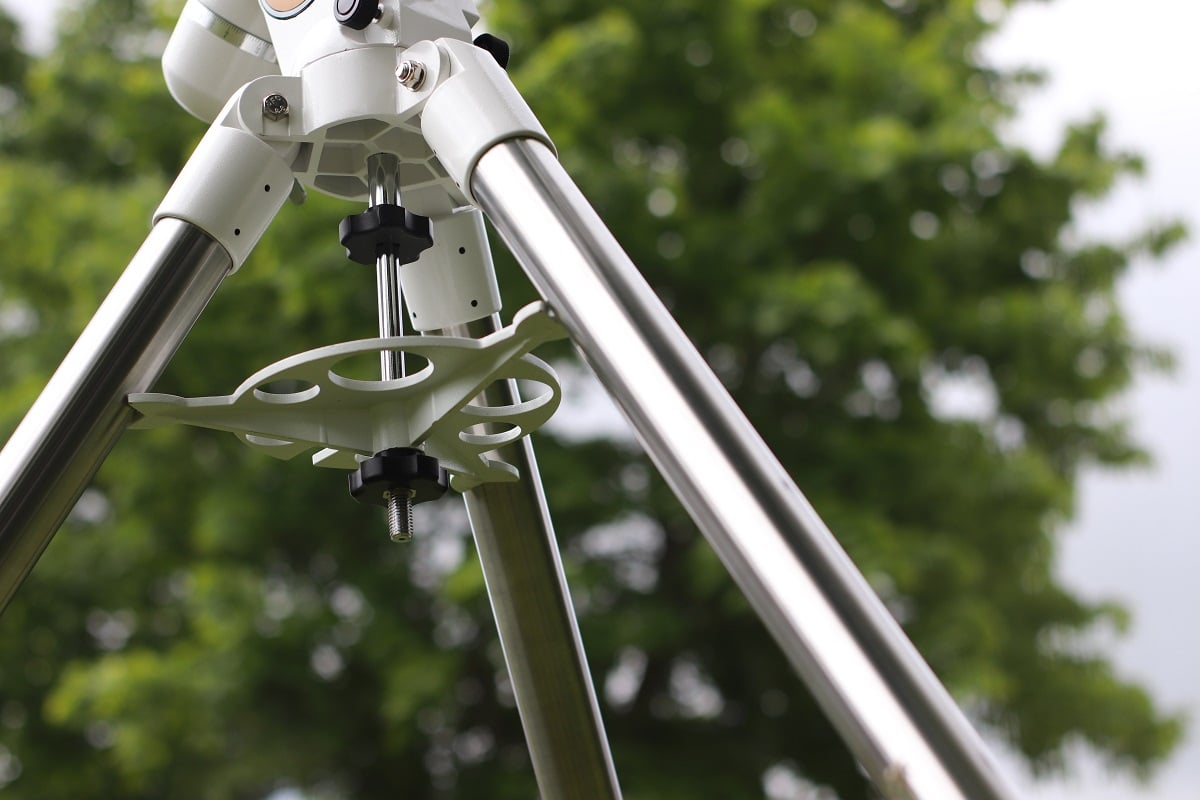
A sturdy tripod is important to ensure that your camera or telescope is stable and secure during use. Factors that contribute to a stable tripod include:
- Leg diameter: the larger the leg diameter, the more stable the tripod. A larger diameter also means that the tripod is heavier, but it will provide greater load capacity and stability.
- Material: the material can also contribute to stability. Aluminium alloys, magnesium alloys and carbon fibre are robust materials that provide good stability, while titanium is ideal for preventing water corrosion.
- Three-point design: The three-point design, in which the tripod legs are arranged in an equilateral triangle, also provides greater stability than a single-leg tripod.
- Hooks on the legs: Some tripods also have hooks on the legs, to which you can attach additional weights to increase the tripod’s stability.
Is a monopod worthwhile?
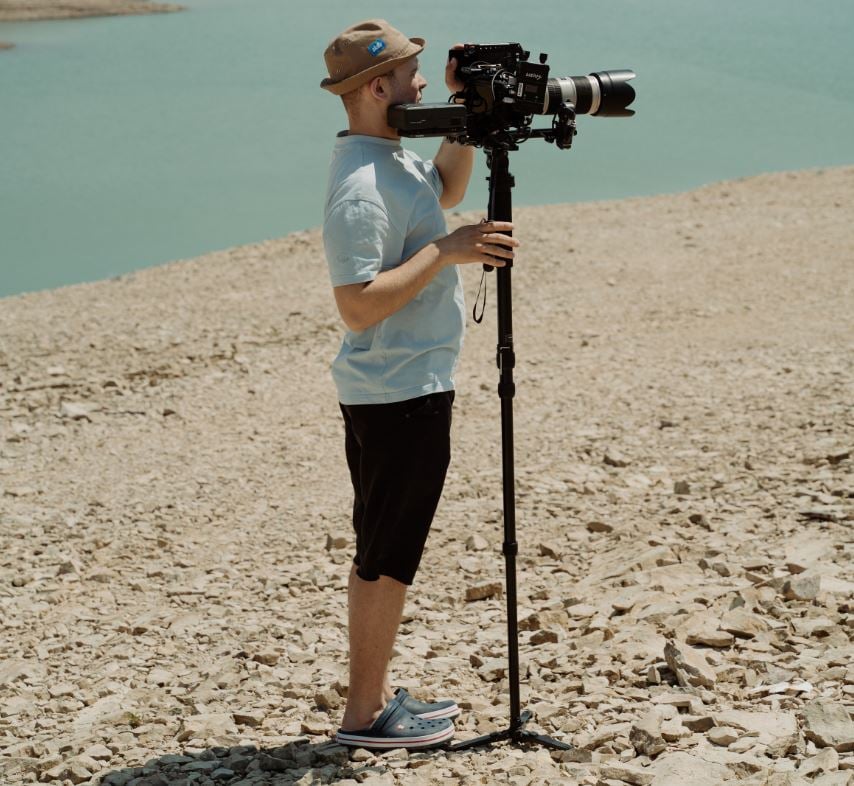 Cottonbro Studio/pexels.com
Cottonbro Studio/pexels.com In comparison to other clearly more stable tripods, monopods require a bit of practice to produce frustration-free results. However, they then offer unique freedom of movement and space-saving flexibility.
This is particularly advantageous for sports photography or for use in large crowds. In many cases, no other tripod could be used, although more stabilisation and weight compensation are necessary than with the hand-held alternative. Additional image stabilisation helps to achieve a clear and sharp image even beyond exposure times of ⅛ second.
What is a gimbal tripod and who are they useful for?
A gimbal tripod is a stabilisation system that autonomously compensates for movement and shake when creating videos. It is ideal for amateurs who want to create dynamic yet stable video and film recordings, but want to do so without heavy, cumbersome, and expensive professional equipment such as dolly systems and camera sliders.
Which tripods are the best? And what about their material, leg diameter, stability?
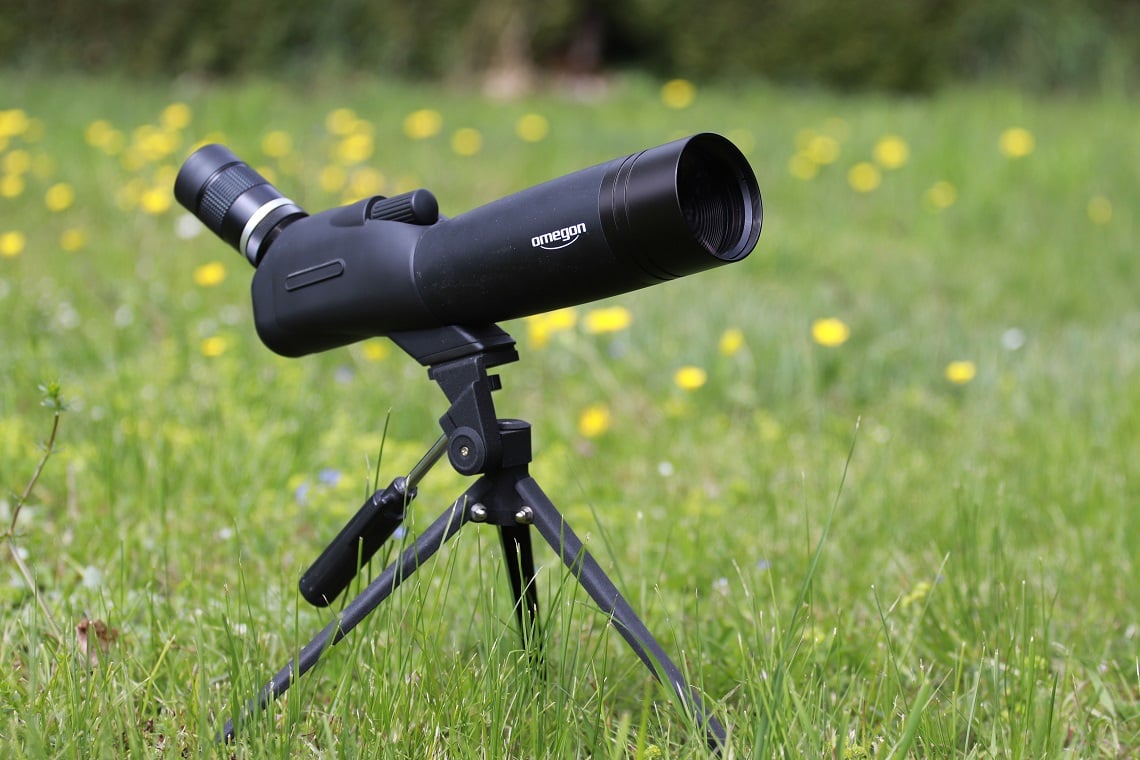
There are many different types of tripods on the market, and the best choice for you depends on your individual needs and expectations. However, here are some factors you should consider when choosing a tripod.
Tripod material: tripods can be made of different materials. Camera tripods have wooden, carbon or aluminium tripod legs. Telescope tripods legs are often made of steel tubing. But what are the differences between these materials? Heavy wooden tripods have the best vibration damping properties, making them particularly suitable for heavy equipment and long focal lengths. Carbon tripods have similarly good properties to wooden tripods, but are significantly lighter. Aluminium tripods are relatively light and inexpensive to manufacture and are best suited for static subjects where the user can work with an automatic release or remote trigger.
Leg diameter: the greater the leg diameter, the more stable the tripod. A larger diameter also means that the tripod is heavier, but it also provides greater load capacity and stability.
Height: tripods are available in different heights. If you are observing or photographing over a long period, you should choose a tripod that is tall enough to allow you to work comfortably.
Load capacity: tripods will have maximum load capacity. Make sure that the tripod is able to support the weight of your camera or telescope.
Transport: if you travel a lot, you should choose a tripod that is easy to transport, such as a travel tripod.
Stability: some tripods have additional stabilisers, such as hooks on the legs, which can be loaded with extra weight to increase stability.
There are many renowned brands on the market such as Leofoto, Berlebach, Manfrotto, Novoflex and Omegon, that offer high-quality and reliable tripods.
Which weight of tripod suits which purposes?
Lightweight tripods - are ideal for travellers and for outdoor use where you may need to carry the tripod over long distances. Light tripods are usually made of aluminium or carbon fibre and weigh between 0.5 and 1.5 kg. Compared to larger and heavier tripods, they are less stable and often have a lower load capacity. However, they are a good choice for light cameras and short exposure times.
Medium-weight tripods - offer a higher load capacity and are stable enough for use for longer exposure times or with heavier cameras and spotting scopes. They usually weigh between 1.5 and 3 kg and are made of robust materials such as aluminium or carbon and can still be carried easily.
Heavy tripods - are ideal for use with heavy cameras, telescopes and lenses, and offer a very high load capacity. They are often made of robust materials such as aluminium or wood fibre and can weigh up to 8 kg. These tripods offer very high stability and are ideal for use with longer exposure times and in difficult shooting conditions in fixed locations or locations that are accessible by car.
It is also important to note that a heavy tripod may not always be the best choice, as it may be too heavy and cumbersome for your needs. It is important to consider the requirements of your project and select the tripod that best suits you.
What do I need to look out for when buying a tripod?
Here is our short 5-step guide
Step 1: Weight
Of course, a lightweight tripod is more convenient to carry, especially when travelling or hiking, when every gram counts. However, if it is too light and turns out to not be stable enough for your shots on the mountain top, when you’re buffeted by wind, you will be cross with yourself for having dragged around something that does not deliver the desired result.
Step 2: Size, height, and pack size
The more space-saving the pack size, the easier it is to transport the tripod when travelling or hiking, but usually this also means that it is less heavy and correspondingly less stable. It is important to find a compromise between compactness and stability that meets your requirements. In general, also bear in mind that the working height should be ergonomic and back-friendly.
Step 3: Load capacity
At this point, you need to consider the combined weight in kilograms of all the equipment that you want to attach to the tripod. We recommend that you weigh your heaviest camera/spotting scope/binoculars, together with the heaviest matching lens you have, and add an extra margin for error.
Step 4: Finish and material
Carbon and aluminium are considered to be the tripod materials of choice, among both beginners and professionals alike. This is due to their light weight in combination with great stability and durability. Aluminium is the absolute value-for-money winner here. Titanium is considered particularly robust against salt water corrosion and wooden tripods impress with their excellent vibration damping properties, their classic design, and the fact that they are made of a sustainable raw material.
Step 5: Tripod head
The most common types of tripod heads are the quick-adjusting and very flexible ball head, or the 3-way tilt heads for particularly precise alignment. It must be noted that tripods do not automatically come with a tripod head.
Do you prefer twist or flip locking?
Twist and flip locks are two different types of leg locking mechanisms used for tripods. The advantages and disadvantages of these can be seen in this summary:
Twist locks
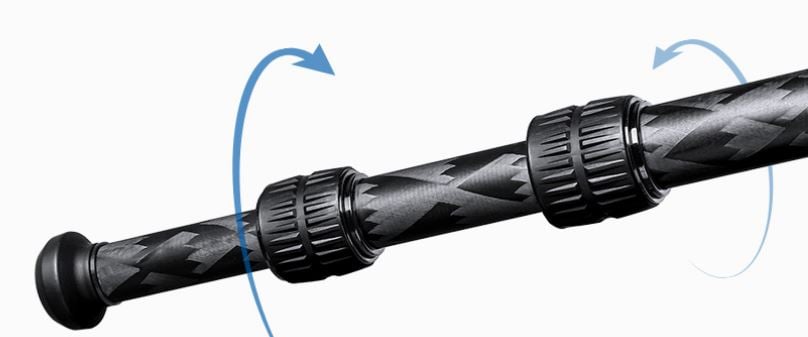
Flip locks
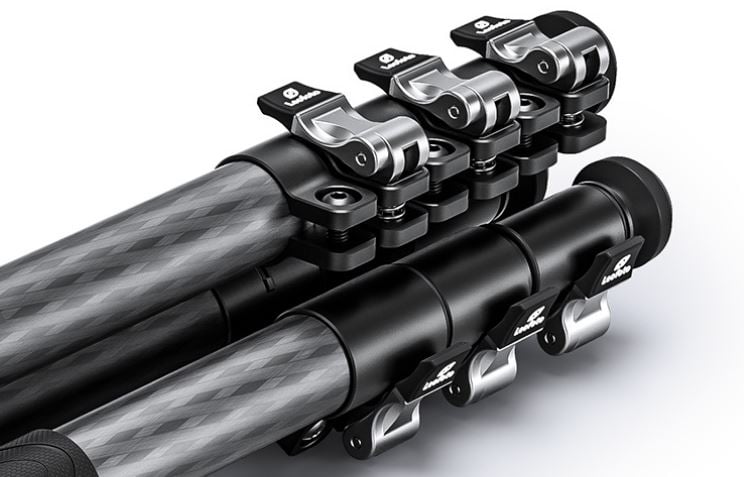
In summary, the choice between twist locks and flip locks depends on whether you need a tripod that lasts a long time and is robust, as twist locks promise, or whether it is more important to you to have a tripod that is easy and quick to set up, in which case flip locks may be the better choice.
What load capacity does my tripod need?
Tripod stability varies, and so too does the load that they can carry. We’re talking about load capacity. When you buy a tripod, you should make sure that it can carry the weight of your equipment safely and without any significant vibration.
Our recommendation: look at tripods that are capable of carrying twice the weight of your equipment. Then you are on the safe side when it comes to stability.
What types of tripod are there?
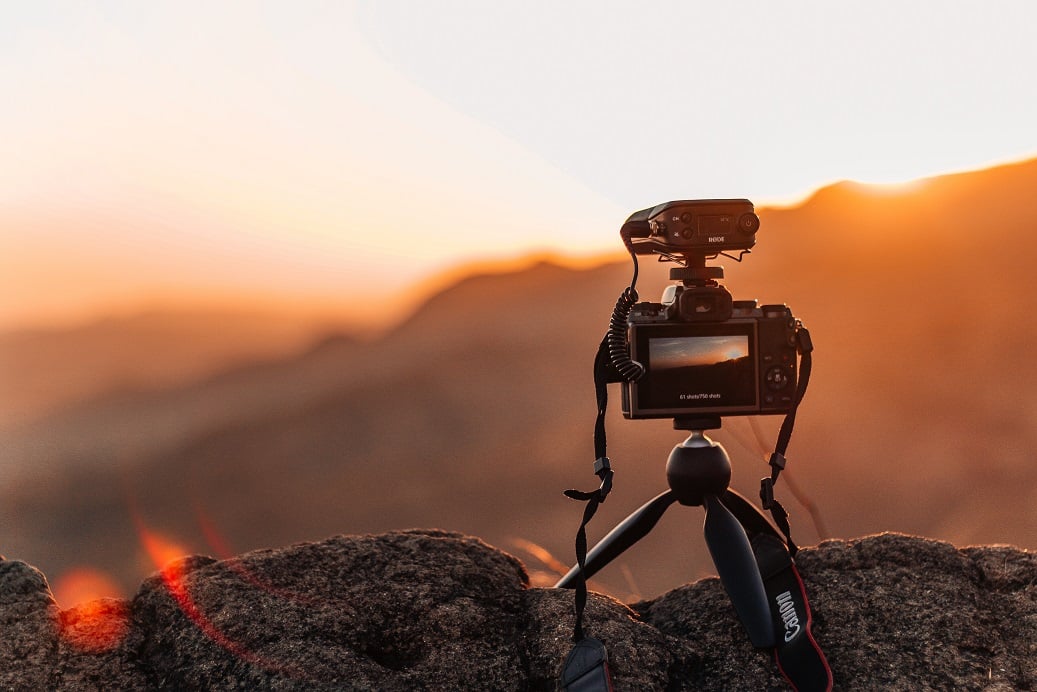 Luis Quintero/pexels.com
Luis Quintero/pexels.com - Monopod: a monopod consists of a single leg, is usually used by photographers, and provides greater stability for photo and video shooting. Monopods are easy to transport and ideal when you don’t have much space for your equipment
- Tripod: the tripod is the most common and well-known stand used for photography. It consists of three legs connected at the top by a plate onto which your equipment is mounted. It offers excellent stability and is available in a variety of sizes and materials.
Subtypes:
Mini-tripods: mini tripods are small and light and are well suited for use on flat surfaces, such as table tops or rocks. However, they are less stable than larger tripods and, apart from a few exceptions, are only capable of carrying lighter cameras.
Telescope tripods: telescope tripods are used for astronomy mounts. In addition, they often have a higher load capacity and can carry heavy telescopes.
Video tripods: these are designed specifically for use with video or film cameras and can be heavier and larger than photo tripods.
Photo tripods: they are designed for use with cameras, binoculars and spotting scopes and are available in various sizes and materials.
Travel tripods: these are usually light and portable, making them ideal for travel.
Which accessories do I need? Do I even need accessories, or is everything I need already included?
Whether or not you need accessories for your tripod depends on your requirements and preferences. Here are some suggestions for suitable accessories:
Tripod head: a tripod head is the joint that holds the camera head on the tripod and allows you to rotate, tilt, and pan the camera. There are various types of tripod heads, including ball heads and tilt heads.
Quick release plate: a quick release plate is a small plate that allows you to quickly attach your camera to or remove it from your tripod without tools. You can also use multiple quick-release plates for different cameras to make switching between them easier.
Spikes: for a better footing on uneven surfaces, spikes can improve your tripod’s grip. They are used in place of the rubber feet.
Tripod bag: a tripod bag helps to transport the tripod safely and keep it protected. There are countless bags to suit all sorts of tripods. Many tripods are already supplied with their own bag.
Counterweights: if you use a heavy lens or any other large optical device, counterweights can help keep the tripod stable and minimize vibration.
What are good entry-level models?
There are some good entry-level tripods that offer solid quality at an affordable price. Classic beginners’ tripods are compact and easy to transport. They have a load capacity that is sufficient for hobby use. They are made of aluminium and have a ball head. A quick release plate is provided, and their operation is simple and user-friendly.
Which tripod do I need for which purpose? Travel – nature watching – hunting – astronomy – hiking
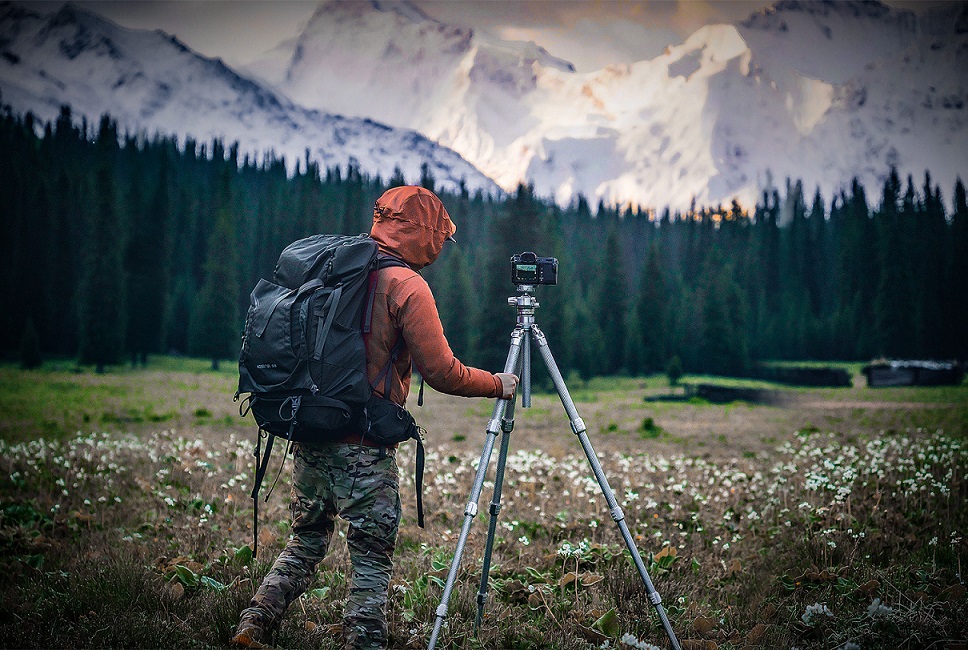
Which tripods are most suitable for travelling?
Tripods that are particularly suitable for travelling are lightweight, compact and can be carried in a backpack. Travel tripods made of carbon or aluminium are therefore ideal, offering good stability at a low weight. Mini tripods and monopods can also be practical for travelling, as they save space and are easy to transport.
Which tripods are recommended for nature watching?
Light and stable tripods with an ergonomic working height and high load capacity are best suited for nature watching with binoculars or a spotting scope. Monopods or low-weight tripods are a good choice because they are easy to transport and provide a good, solid base for your optics.
Which tripods are suitable for hunting?
You will need a robust and stable tripod for hunting, which can be used even when the conditions are difficult. Tripods with a silent ball head and a large load capacity are an advantage here to ensure that heavy cameras and lenses or binoculars remain stable. Nevertheless, as you may need to hike through the forest carrying it, it should not be too heavy.
Which tripod do I need for astronomy?
For astronomy, heavy and stable tripods are required to carry large telescopes and provide a stable platform for observing. Here, large, heavy tripods with a high load capacity, and which can be adjusted at an ergonomic working height, are called for. Such tripods can be heavier in this case, as these rarely have to be carried across long distances.
Which tripods are best suited for hiking in the mountains?
Especially light and compact tripods which fold up to fit into a backpack and so are easy to transport are best suited for hiking. Mini tripods and monopods can be a good choice here, as they are light and easy to use, even if using a monopod takes a bit of practice. There are also special hiking tripods, which are particularly light and compact and are therefore ideal for hiking and more than satisfy general hobby needs.
Author: Marcus Schenk
Marcus is a stargazer, content creator and book author. He has been helping people to find the right telescope since 2006, nowadays through his writing and his videos. His book "Mein Weg zu den Sternen für dummies Junior" advises young people, and those who are still young at heart, what they can discover in the sky.
As a coffee junkie, he would love to have his high-end espresso machine by his side under the starry sky.
If you are unsure which tripod you need, we recommend that you consult a specialist dealer or an experienced photographer or astronomer who can help you choose the right one.
Our competent consultants are happy to advise you by phone on +49 (0) 8191 / 94049-2
or via an e-mail to

